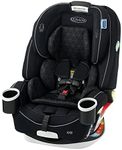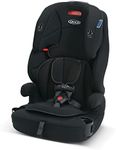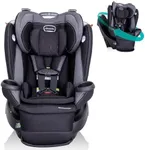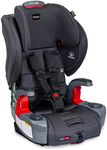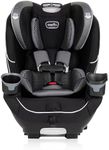Buying Guide for the Best Easy To Install Convertible Car Seat
Choosing an easy-to-install convertible car seat is an important decision for your child's safety and your own peace of mind. Convertible car seats are designed to grow with your child, typically starting as rear-facing for infants and then converting to forward-facing for toddlers and older children. The key to picking the right one is understanding which features matter most for your lifestyle, your vehicle, and your child's needs. Focus on ease of installation, safety features, comfort, and how well the seat will fit in your car. Always check that the seat meets current safety standards and is compatible with your vehicle.Installation SystemThe installation system refers to how the car seat attaches to your vehicle, usually through either the seat belt or the LATCH (Lower Anchors and Tethers for Children) system. This is crucial because a properly installed seat is much safer in the event of a crash. Some seats have features like color-coded guides, click-in indicators, or built-in lock-offs to make installation easier. If you want the simplest experience, look for seats with clear instructions and helpful installation aids. If you frequently move the seat between cars, prioritize models known for quick and straightforward installation.
Weight and Height LimitsWeight and height limits determine how long your child can use the seat in both rear-facing and forward-facing modes. This is important because keeping your child rear-facing as long as possible is safest. Seats with higher limits allow for extended use, which means you won't need to upgrade as quickly. If your child is on the taller or heavier side, look for seats with higher maximums. If you want a seat that lasts through multiple stages, pay close attention to these numbers.
Size and Fit in VehicleThe size and fit of the car seat in your vehicle affects both safety and convenience. Some seats are bulkier and may not fit well in smaller cars or leave enough room for other passengers. It's important to measure your back seat and compare it to the seat's dimensions. If you have a compact car or need to fit multiple seats, look for narrower or more compact models. Always test the fit before finalizing your choice if possible.
Ease of AdjustabilityEase of adjustability refers to how simple it is to change the harness height, recline angle, or headrest position as your child grows. This matters because you'll need to make adjustments frequently to keep your child comfortable and safe. Some seats have no-rethread harnesses or one-handed adjustment levers, making changes quick and hassle-free. If you want to avoid complicated steps, look for seats with intuitive adjustment mechanisms.
Safety FeaturesSafety features include things like side-impact protection, energy-absorbing foam, and reinforced frames. These features are designed to provide extra protection in the event of a crash. While all car seats sold must meet minimum safety standards, some offer additional layers of protection. If safety is your top priority, look for seats with enhanced safety technologies and check for independent safety ratings.
Comfort and PaddingComfort and padding refer to the quality of the seat's cushioning and fabric. This is important for keeping your child comfortable, especially on longer trips. Some seats offer extra padding, breathable fabrics, or removable inserts for infants. If you travel often or your child is sensitive to textures, prioritize seats with plush, easy-to-clean materials.
Ease of CleaningEase of cleaning is about how simple it is to remove and wash the seat cover and harness. Kids can be messy, so being able to quickly clean spills or accidents is a big plus. Some seats have machine-washable covers and parts that are easy to take off and put back on. If you value convenience, look for seats with straightforward cleaning instructions and durable, washable fabrics.
